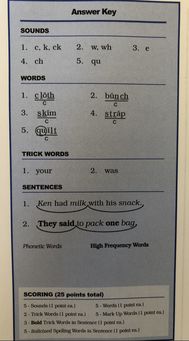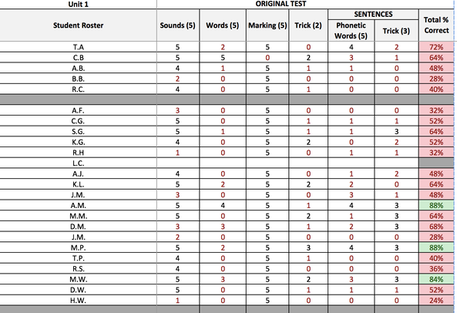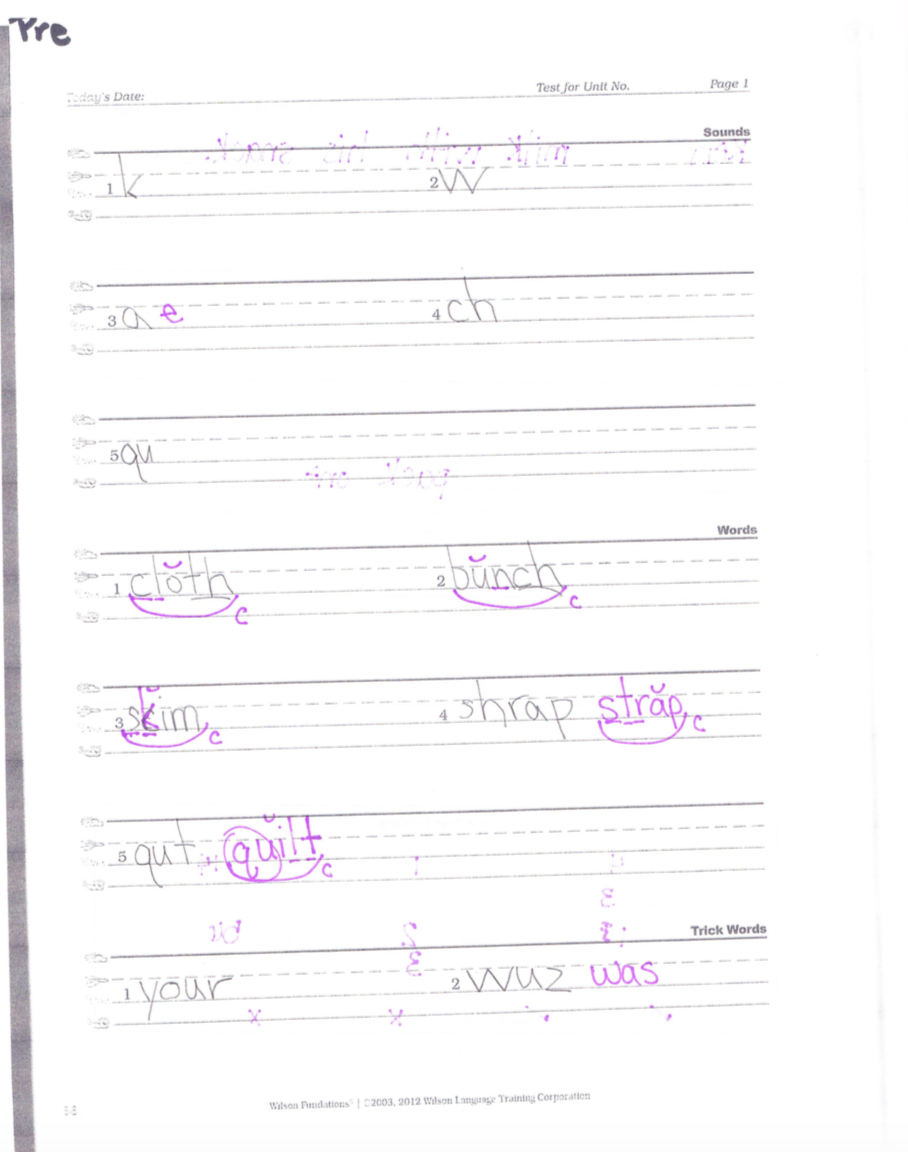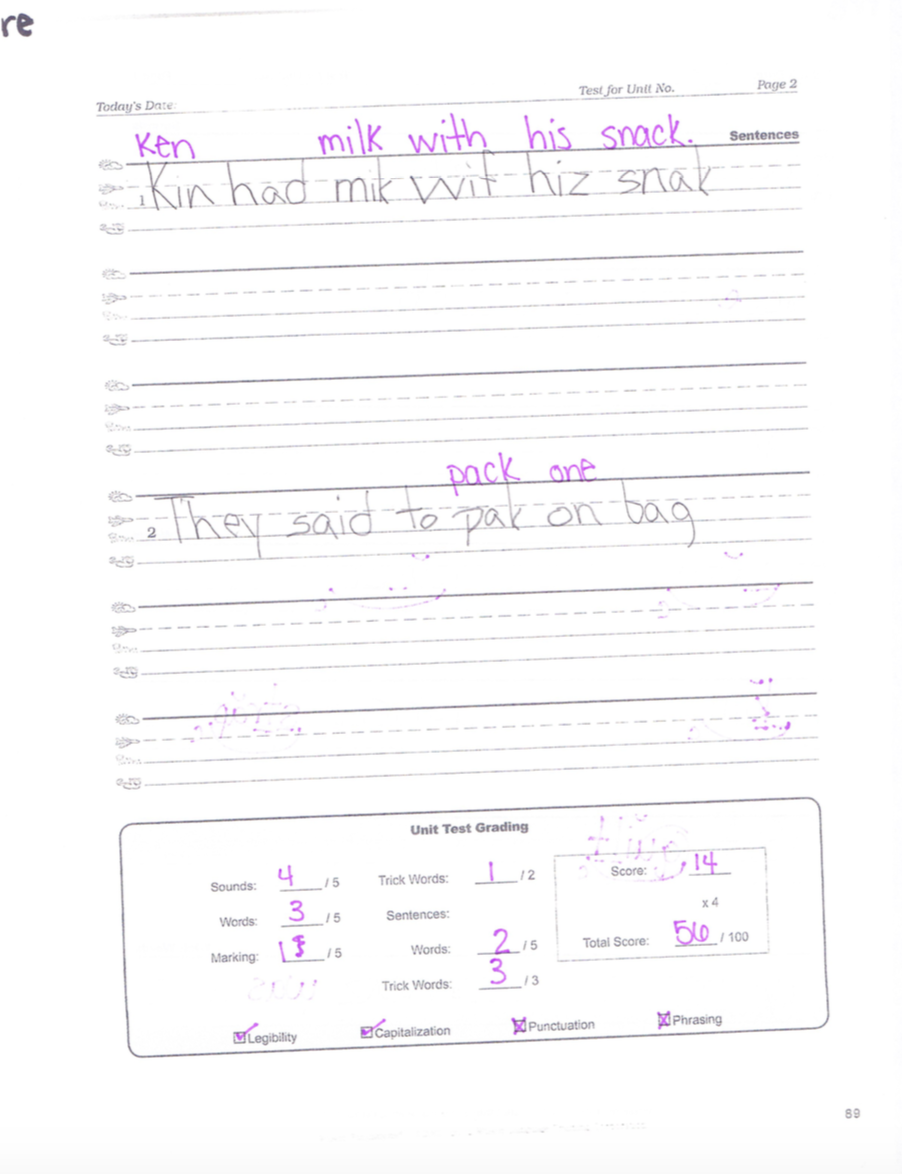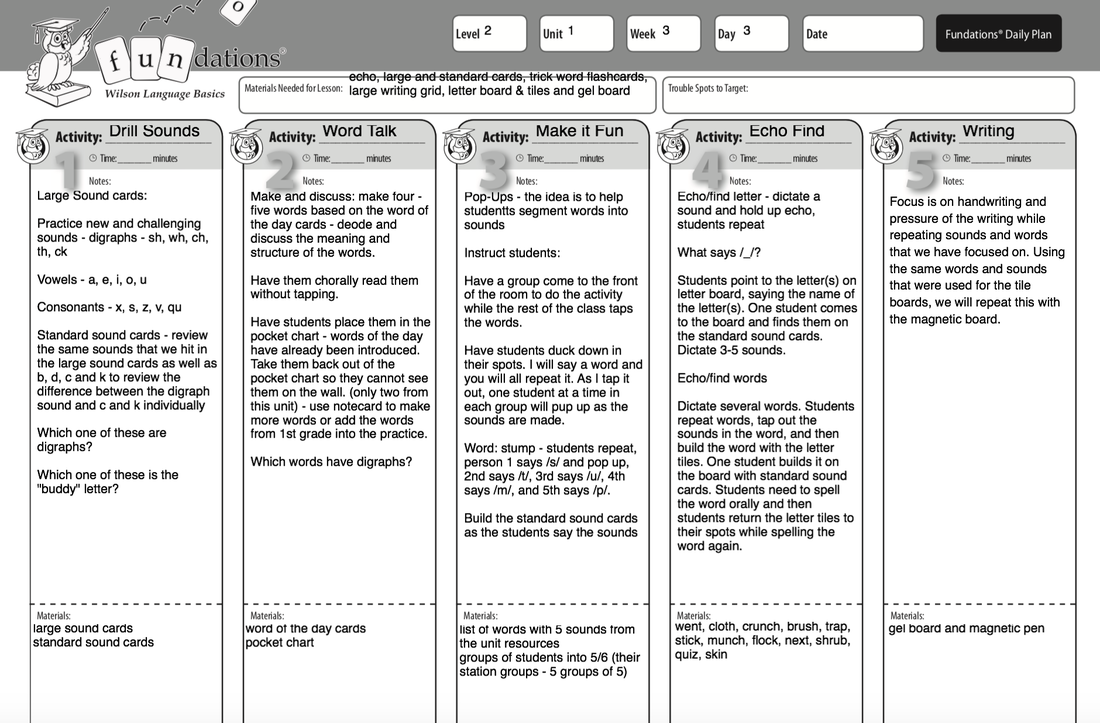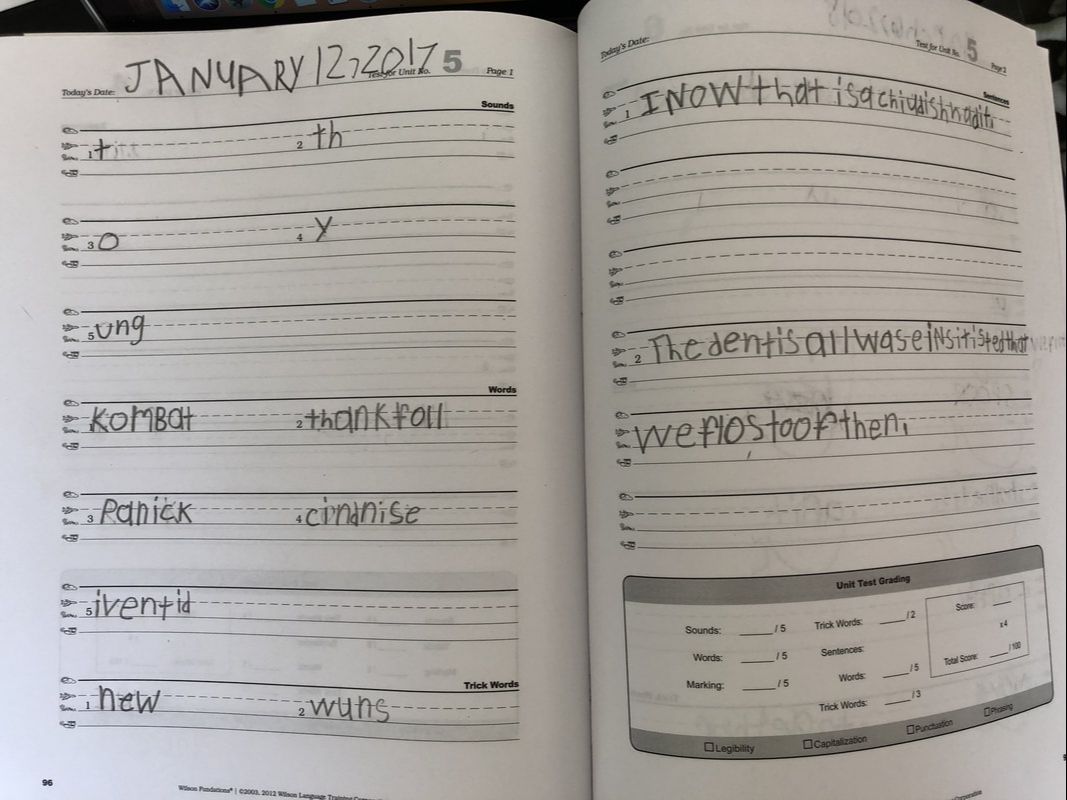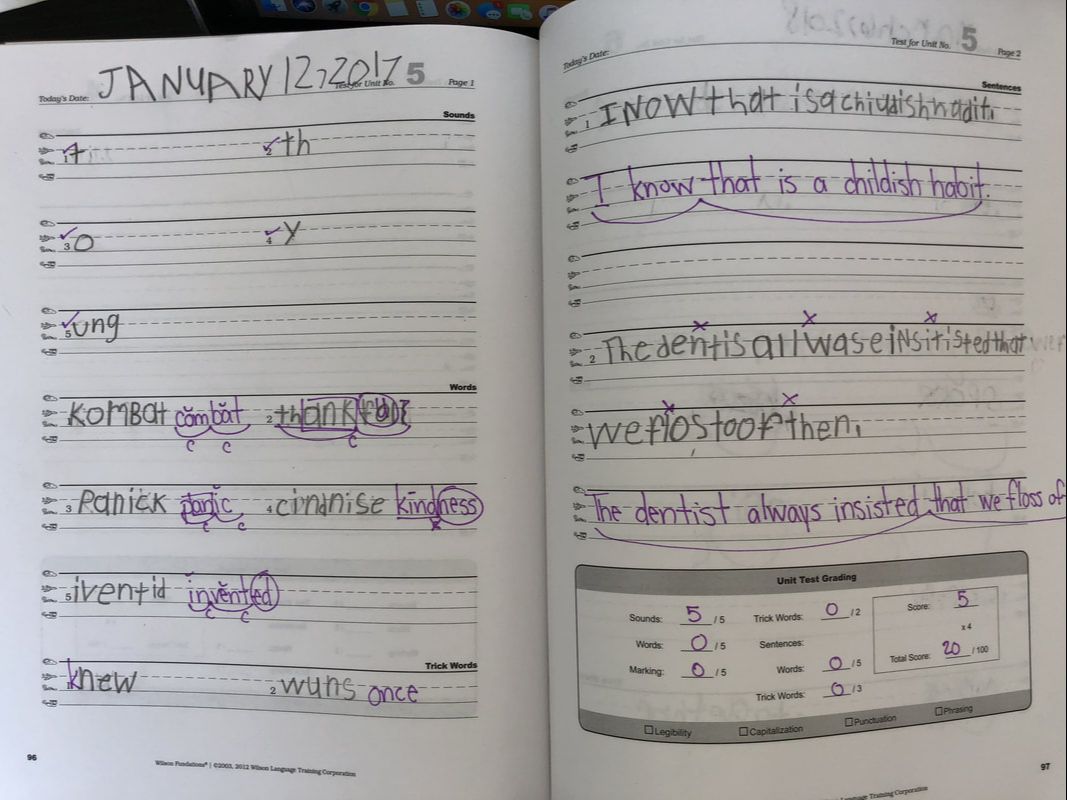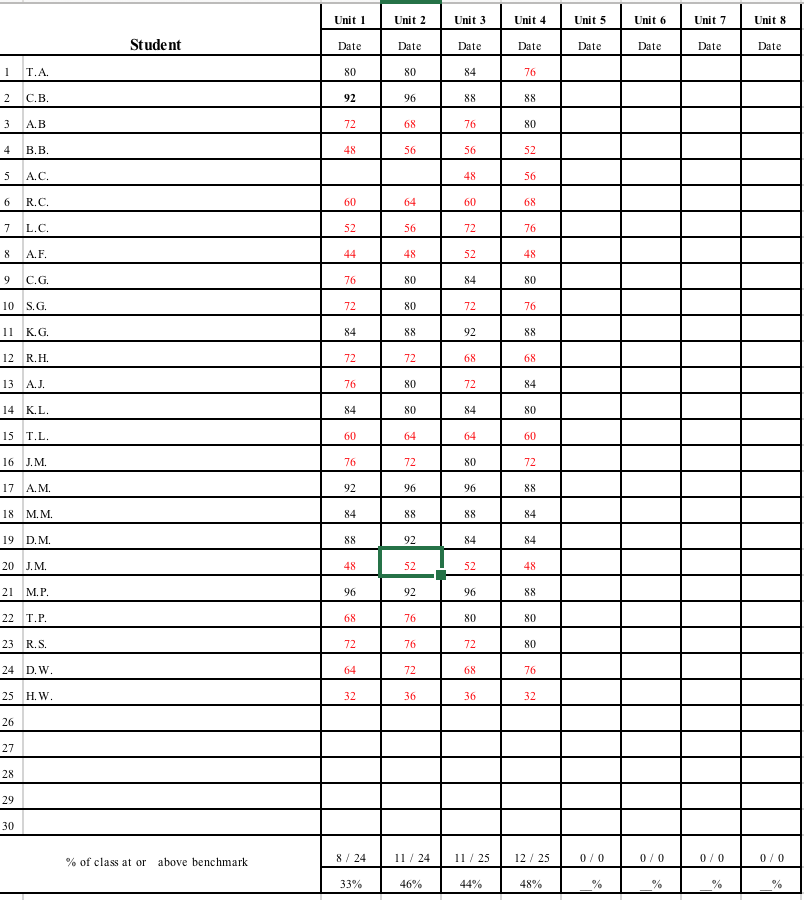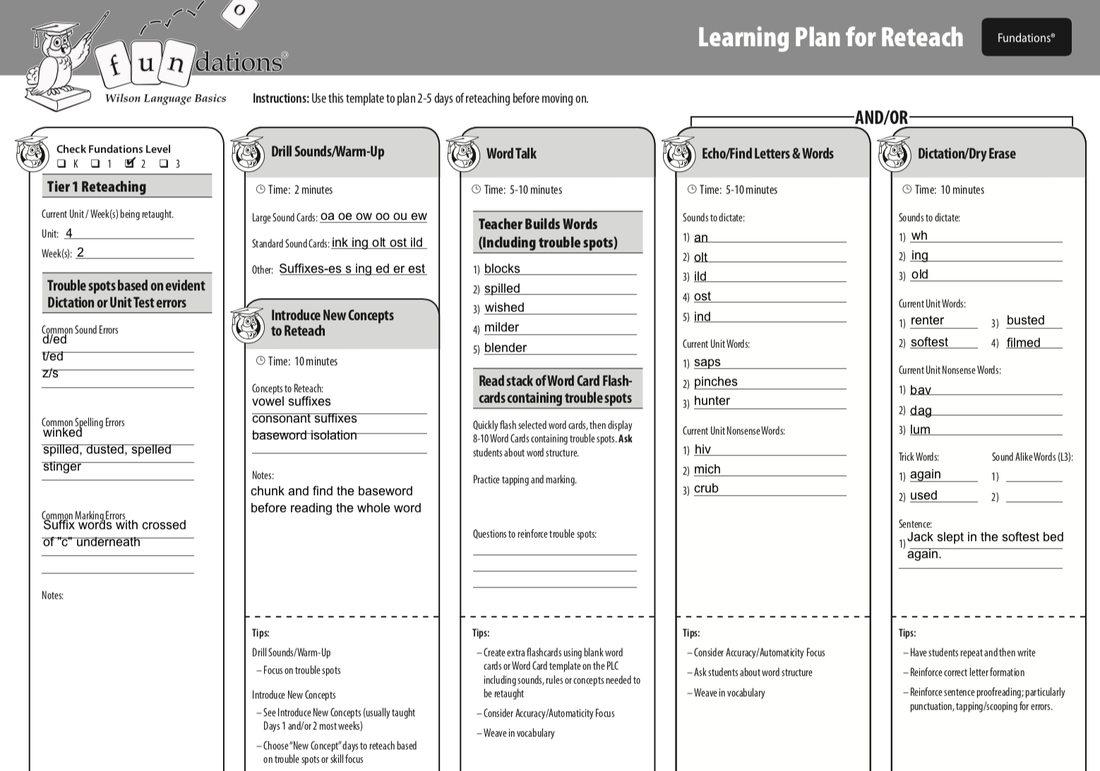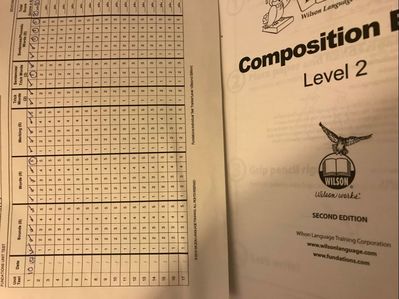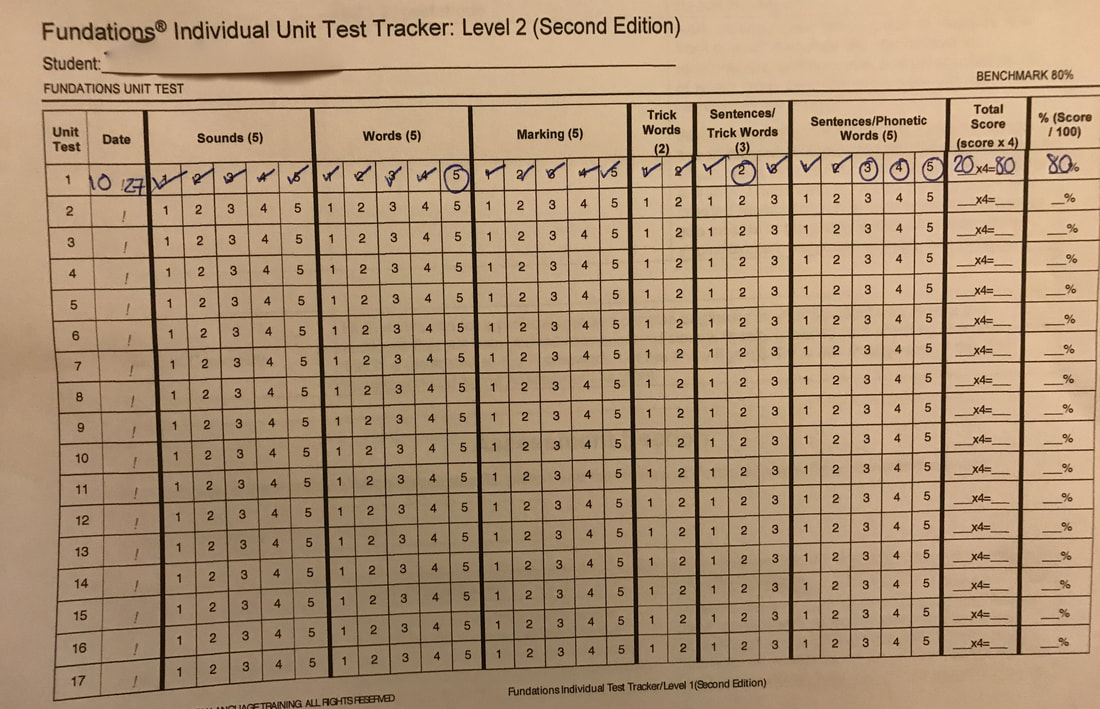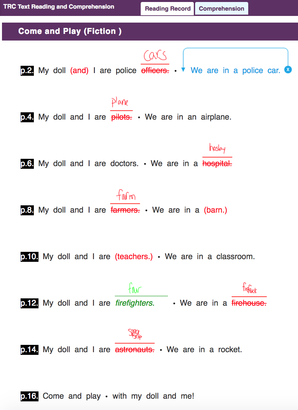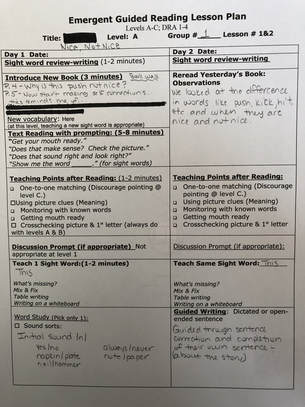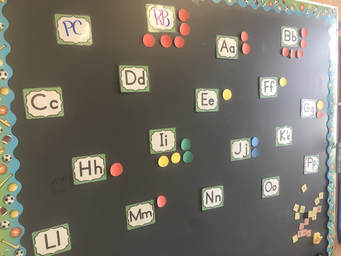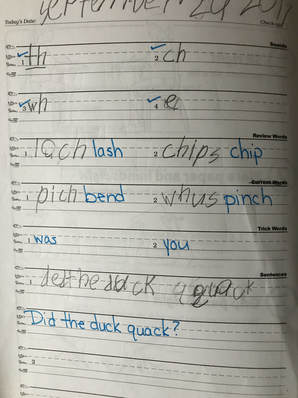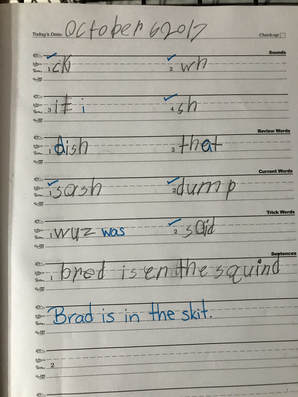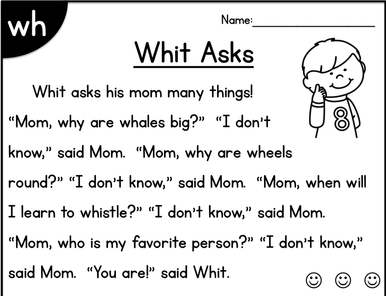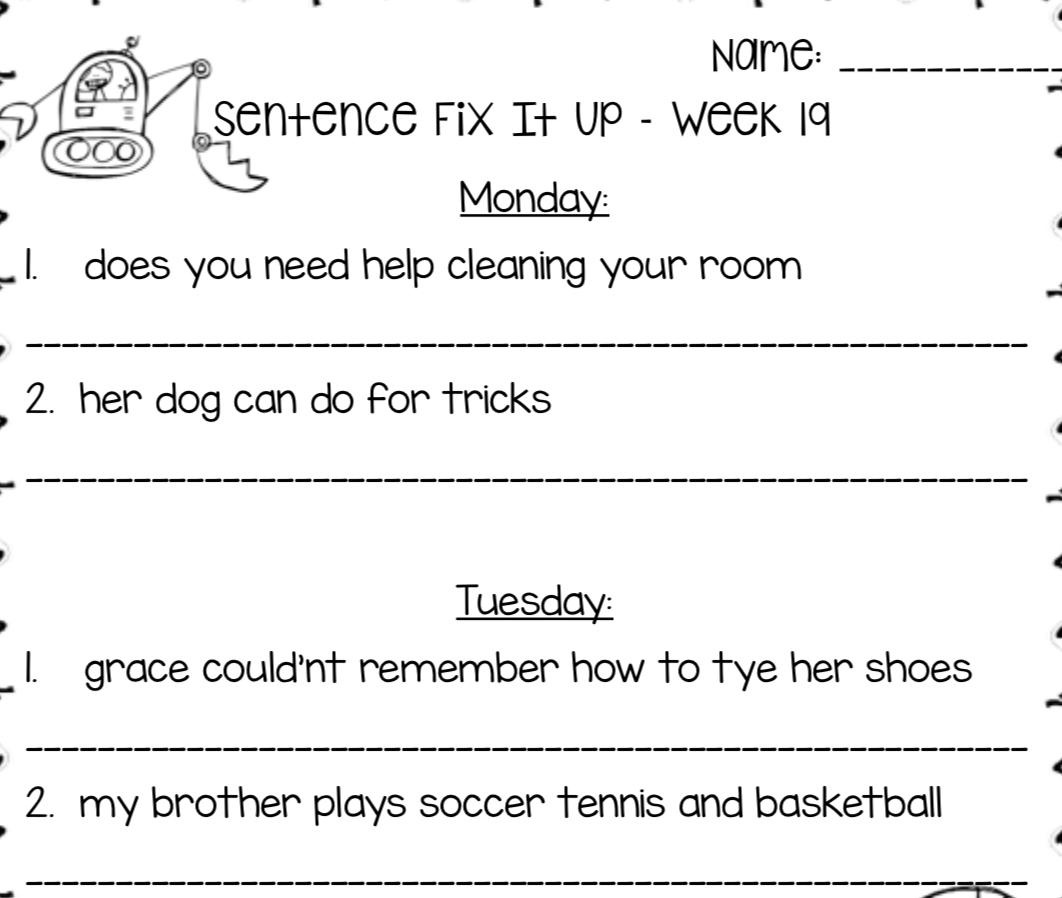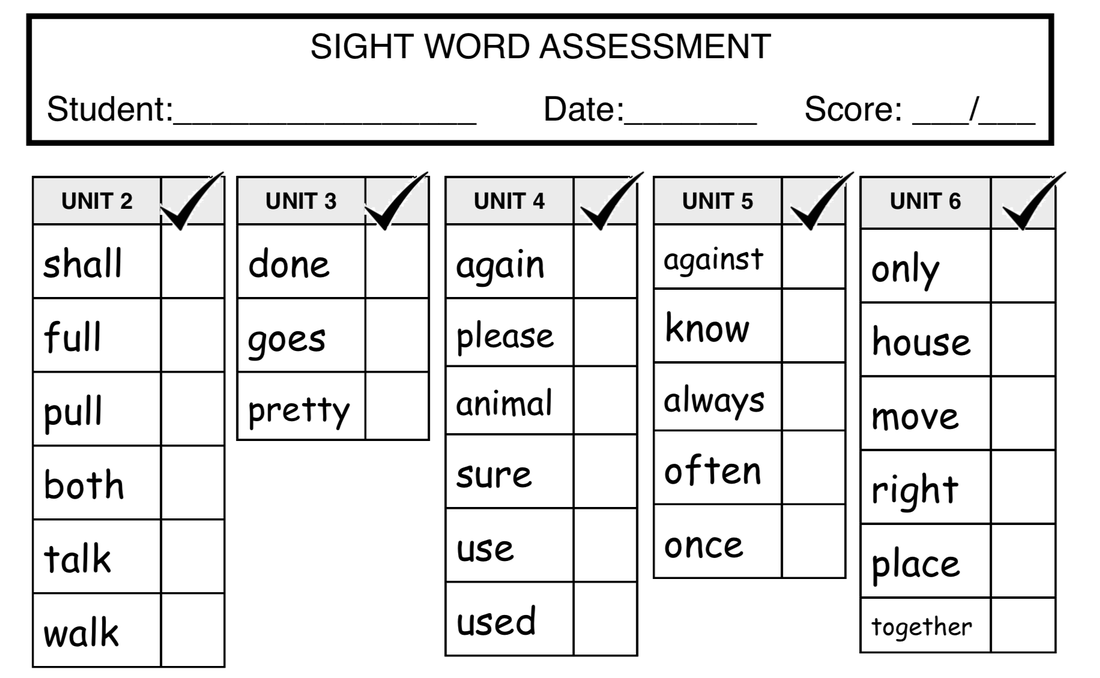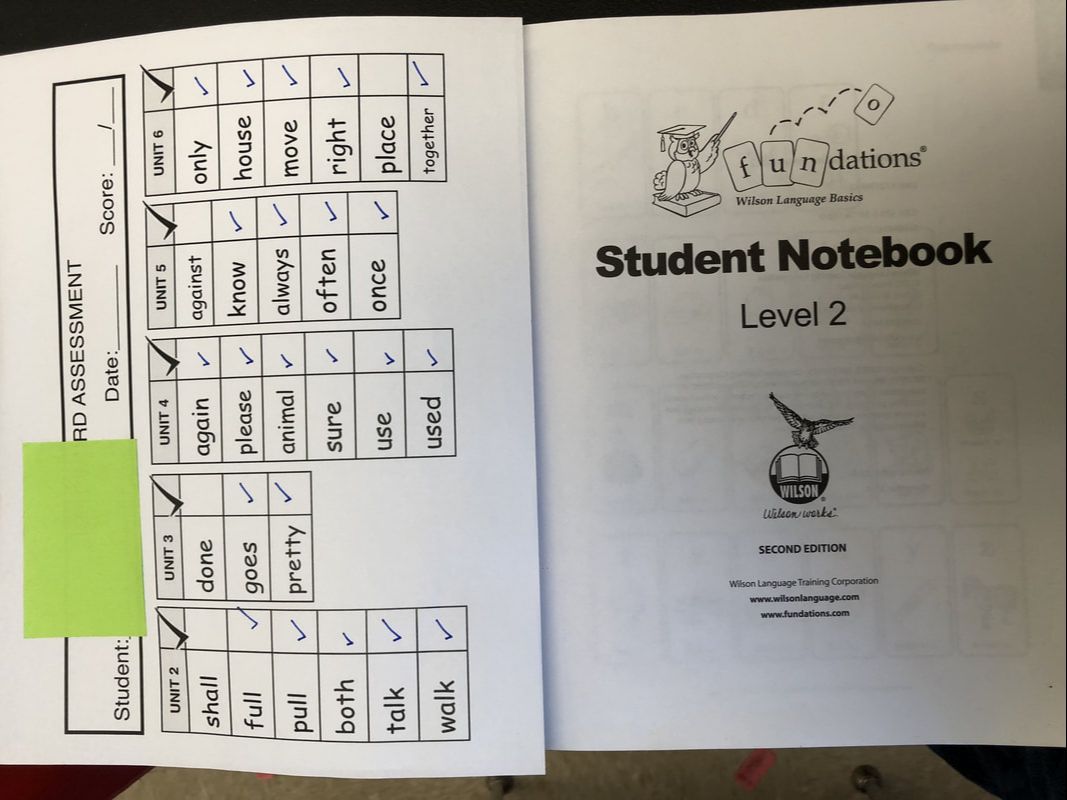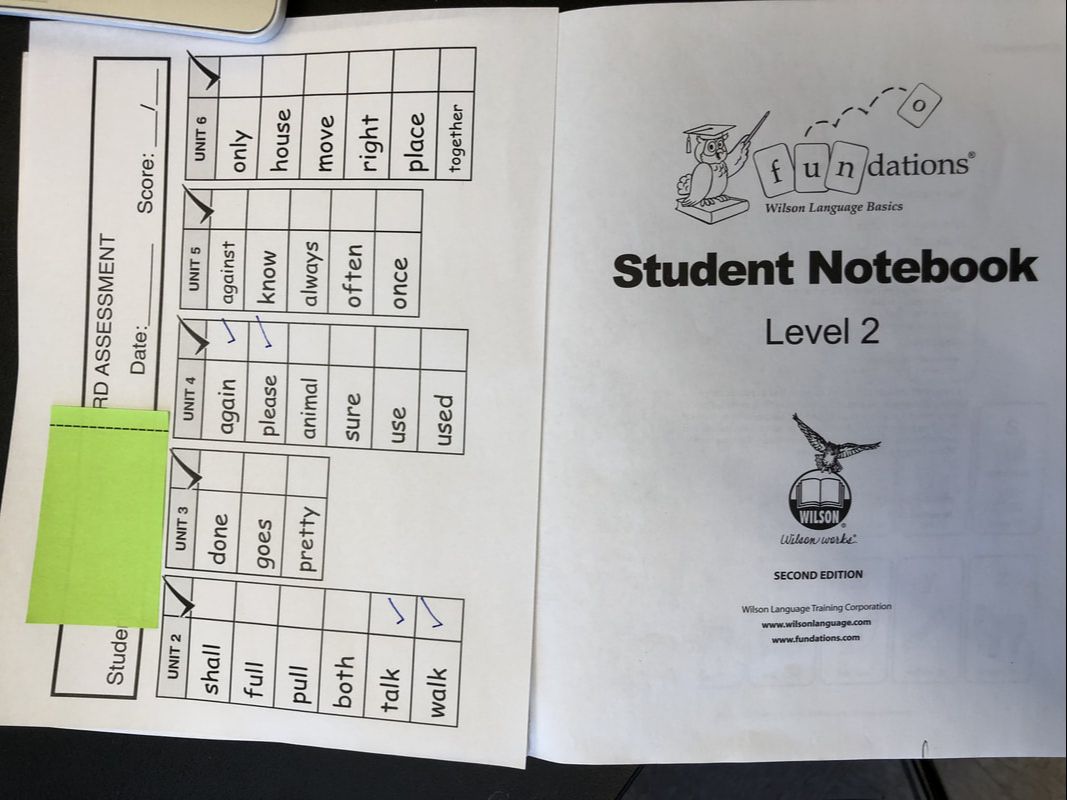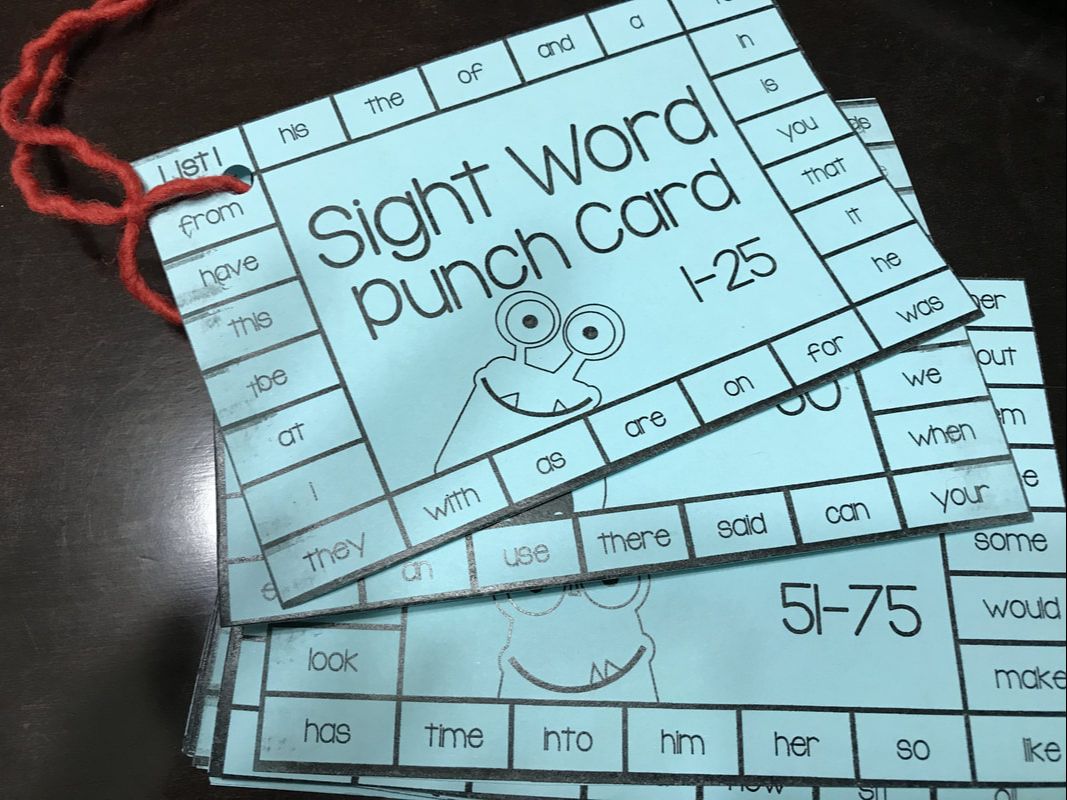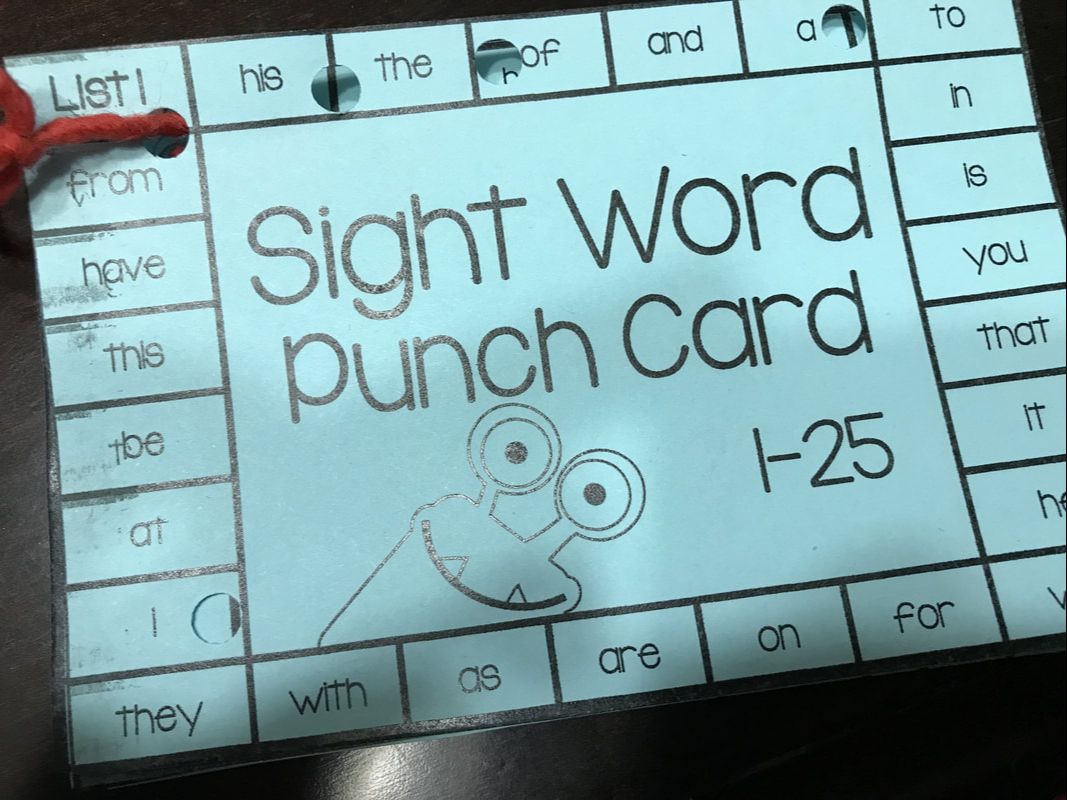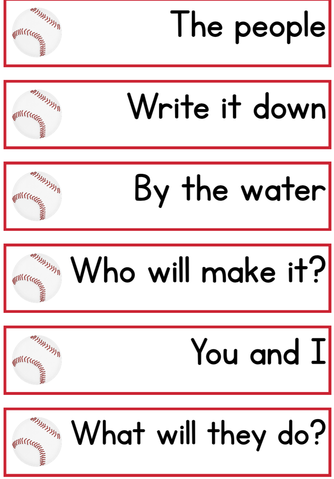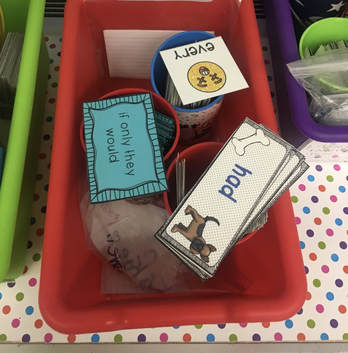Assessments
InTASC Standard #6: The teacher understands and uses multiple methods of assessment to engage learners in their own growth, to monitor learner progress, and to guide the teacher’s and learner’s decision making.
Introduction
I use assessments to check for understanding with my students when working on skills and standards throughout the year. I use many different types of assessments, all with the goal to allow students to independently showcase what they know and adjust my instruction, both whole group and small group, for students and what skills they need additional supports in.
Not only is it vital for me to be aware of where my students are, but it is also crucial for students to be aware of where they are and how they can track their growth throughout the year. Engaging students in their progress creates an investment and a relationship between me and the student. Checking in with these students and allowing them to take a part in tracking their growth allows us to discuss what works well for them and where they are struggling and need more support along the way.
Within this section, you will find examples of assessments that I have given during my phonics and reading block, in order to better the learning and mastery of skills for students throughout the year. You will also find examples of ways that students engage in their own learning and tracking of growth.
Not only is it vital for me to be aware of where my students are, but it is also crucial for students to be aware of where they are and how they can track their growth throughout the year. Engaging students in their progress creates an investment and a relationship between me and the student. Checking in with these students and allowing them to take a part in tracking their growth allows us to discuss what works well for them and where they are struggling and need more support along the way.
Within this section, you will find examples of assessments that I have given during my phonics and reading block, in order to better the learning and mastery of skills for students throughout the year. You will also find examples of ways that students engage in their own learning and tracking of growth.
Assessing Phonics
I use Fundations as my main phonics instruction. I assess students before, during, and after each unit. Below, you will see evidence of the pre- and post- assessments I provide in Fundations.
I give pre-assessments, like the one below, to see what information students have retained or may have prior knowledge about. I use this information to determine with Fundations lessons to emphasize during regular instruction. In the pre-assessment below, students were asked to apply their knowledge of sounds, trick words, word blending using the patterns and rules of spelling from the previous units while marking up the words and sentence structure by completing two sentences that they are dictated.
I give pre-assessments, like the one below, to see what information students have retained or may have prior knowledge about. I use this information to determine with Fundations lessons to emphasize during regular instruction. In the pre-assessment below, students were asked to apply their knowledge of sounds, trick words, word blending using the patterns and rules of spelling from the previous units while marking up the words and sentence structure by completing two sentences that they are dictated.
After giving the pre-assessment, I noticed that many of my students were going to need extra support in blending and spelling their words as well as successfully using correct spelling of trick words and phonetic words in their sentences. I ensured that when I taught lessons on these skills, I emphasized the common trends in sounds they missed in order to spell their words, but spending more time on activities and many different ways to build and spell words and apply them in sentences. The lesson plan below is from one of those lessons. I use a Fundations template and add in the specific reteaching points based on the data from the pre-test. Below you'll see that I included a fun "Word Talk" activity to help my students blend in a fun way. I also included a dictation activity to ensure they have multiple opportunities for spelling words.
After the Fundations unit, I give a post-assessment. When giving the post assessment, I am able to see where students grasped the learning and where students will need additional support through additional lessons and what they may need more repetition by using the skills independently. The unit assessments focus on sounds (both letter sounds and "glued" sounds), words that are focused on the trends and skills in that unit, nonsense words, trick words (or sight words) as well as having students write sentences. When writing out their words and sentences, students are expected to mark up the words to show their knowledge of the skills and trends within the words. By reviewing the assessments, I am able to focus and group students based on what they need more support in and how they will be best supported based on their needs. Below is a picture of the post-assessment from the unit above.
After giving the post assessment, I look for trends in the data to see how to best support my students. Below you will see an example of a testing tracking form.
After looking at the data from a unit assessment, I am able to group students together who need an additional intervention block of Fundations. During that time, I am looking at grouping students who would be able to work together or independently to focus on skills that can be reinforced through independent work. Along with this, there are certain skills that students could have during their rotations that are more tactile with organizing trends and skills within the unit goals. If less than 80% of students receive 80%, there would be a standard reteach of the lesson and focusing on troubled spots. Students who score lower than 50% are students who would receive the additional support during an intervention block. Those students who scored between 50-80% will receive small group instruction based around the biggest struggle skill throughout the unit. If students struggled with letter sounds, we would focus on letter recognition and sounds, if they are struggling with words, we will focus on letter blending and sounding out, etc.
Below is an example of how I readjust for a whole class reteach based on the scores and results of the end of unit assessment.
Below is an example of how I readjust for a whole class reteach based on the scores and results of the end of unit assessment.
This lesson plan is used based on the results of the end of unit assessment. Based on the standards for Fundations, there was not substantial growth after reviewing their test scores and mastery of the content to continue on without a reteach for the entire class. After analyzing their post-assessments, I was able to take the trends that were missed and implement them into a focused reteach lesson plan that would take 4-5 days to teach.
I engage students in tracking their own growth by allowing students to have their own student tracker in the front of their notebooks. After I complete the grading of their assessments, students then transfer the scores to their own tracker that is glued into the front of their journals. This allows students to see their growth, strengths and areas of weakness. Once they have transferred the scores, students then complete a review of the assessment by completing a "rewrite" of their won assessment with the corrections that I have made in their own book. See below for an example of a student notebook with the tracker in the front of their books.
I engage students in tracking their own growth by allowing students to have their own student tracker in the front of their notebooks. After I complete the grading of their assessments, students then transfer the scores to their own tracker that is glued into the front of their journals. This allows students to see their growth, strengths and areas of weakness. Once they have transferred the scores, students then complete a review of the assessment by completing a "rewrite" of their won assessment with the corrections that I have made in their own book. See below for an example of a student notebook with the tracker in the front of their books.
Assessing Reading
As another form of testing in order to better analyze and assist my students, we use testing of TRC, which assesses their reading level and comprehension, and Dibels which assesses their letter knowledge, nonsense word sense and fluency on a blind read. Below is the data for part of my class after the middle of the year testing window:
The first image below on the left is an actual screen shot of the TRC reading assessment that was given to one of the students in my lowest groups. On the right had side, is an image of a guided reading lesson plan that I would use when meeting with his group that is built with the assistance of TRC.
Below you will see the data and grouping for students based on their reading level, but also their skills grouping. These groups are made with my insight and the recommendations from TRC and Dibels (mCLASS). Following the data grouping, are examples of activities and lesson plans that I would use to focus on a point that the students struggled on based on their testing result. Both are based on the lowest groups in my classroom.
|
|
|
Below is how I engage students in their reading levels and taking investment in their own learning. They put their circle up based on the initial test and then got to move them after their middle of year testing.
Check-Ups
There are many ways that students are assessed in between these assessments. For example, in Fundations, students have five day check-ups. Students use their white boards, tile boards, and magnetic boards to show me what they've learned since their last assessment. Along with this, students complete tasks during their station rotations that relate to Fundations that allow me to see what they are or are not understanding during the unit. Below is an example of a check-up. Students should be able to pull the initial rules and spelling patterns that have been introduced as well as what they have learned in previous units. If I am noticing trends in their check-ups this is a good time to pull those sounds and words that emphasize the skills and patterns they are struggling to master. These check-ups allow me to see if students need more time, and an extension of the unit before moving to the next unit.
In both of these check-ups, I noticed that students were struggling with the sight (trick) words you and was, as well as the use of words and sounds in sentence structure. While students were able to identify digraphs when used in sounds, they struggled to identify the correct digraphs when they are in words.
The center activities below show examples of how to support students after analyzing the data. The wh reading activity allows students to focus on their digraphs within a reading and recognize the sound in a word instead of individually. The sentence fix up allows students to practice reading fluently and fixing the sentence to increase their confidence when it comes to writing a sentence that is dictated to them. Although the sneaky e game also focuses on the open syllable rule, it allows students to also work harder to recognize sight words and sound words out.
The center activities below show examples of how to support students after analyzing the data. The wh reading activity allows students to focus on their digraphs within a reading and recognize the sound in a word instead of individually. The sentence fix up allows students to practice reading fluently and fixing the sentence to increase their confidence when it comes to writing a sentence that is dictated to them. Although the sneaky e game also focuses on the open syllable rule, it allows students to also work harder to recognize sight words and sound words out.
|
|
Assessing Sight Words
Students are also assessed on sight words they know. I track knowledge of the sight words that are being taught from unit to unit in Fundations. Below you will see an example of a sight word assessment:
The assessment above shows the sight words that are in each unit of Fundations. Each student has the copy of this sight word assessment inside of their student notebook. Their student notebook is where they write the words of the day and the definitions of those words as well as practice writing their sight words. At the end of each unit, students bring their notebooks back to the small group and I assess them on their knowledge of the sight words so far. As they master the sight words, I place a check next to the work, otherwise the box stays blank until they master it.
From this assessment, I create sight word activities in centers to ensure students can continue to learn automaticity of sight words.
From this assessment, I create sight word activities in centers to ensure students can continue to learn automaticity of sight words.
The majority of the automaticity games that are chosen are based on their knowledge and how far they have made it on their punch cards and the Fundation mastery. Certain groups, that struggle with the larger words, are simply focusing more on CVC words and short sight words when working independently. The groups that have mastered the sight words for the unit have games that include their sight words in sentences. This not only allows them to practice reading the sentences, but also to see and remember how to use them in a sentence when they are being tested.
Students are able to track their own growth in sight word knowledge. Students are given sight word punch cards and, after their weekly sight word test, they punch holes in their individual sight word tracker.
Conclusion
I intentionally use assessments to ensure my instruction is meeting student needs and that I am adjusting it when necessary. Students are provided many different opportunities to show their wealth of knowledge with the understanding that each student learns best in different ways. It is crucial to use more than one type of assessment in order to make sure that I am noticing trends within my classroom. Being able to reflect upon the different ways to assess students and knowing how students performs allows me to plan and create the best activities for the support and success of all students. Engaging students in their growth keeps my students invested and allows them to take ownership of their learning.
